

STAYING



s older adults increasingly engage with digital services, from online banking to telehealth, the need for robust but accessible digital safety measures has never been more pressing.
Seniors are disproportionately targeted by scammers, with many falling victim to phishing attacks, impersonation scams, and fraudulent links. Compounding this vulnerability is the challenge many face in remembering complex passwords and PINs, particularly those experiencing memory decline.
Digital safety for seniors must go beyond standard practices. Simple, secure solutions are key. Features like biometric logins (fingerprint or facial recognition) can significantly reduce the burden of memorisation while maintaining strong security. Likewise, two-factor authentication (2FA), though an effective tool, should be adapted to suit older users. Phone call verifications or simplified app notifications may be easier to manage than codes sent to unfamiliar platforms.
Tech companies are also playing a role in safeguarding older users. Apple, for instance, has embedded features in the iPhone that allow users to disable access to the control panel from the lock screen. This prevents thieves from switching
off Wi-Fi or activating airplane mode, which would make a stolen phone un-trackable. Apple also enables users to store passwords securely in the Notes app, with individual notes protected by a separate PIN, different from the phone’s main unlock code. This helps ensure that even if someone gains access to the device, sensitive information remains protected.
In New Zealand, banks are also stepping up. ANZ, BNZ, and Westpac are investing in scam awareness campaigns, personalised fraud alerts, and dedicated support lines for older customers. Many now offer in-branch digital education sessions to help seniors build confidence while staying safe online.
Future-proofing should involve all providers of sensitive information. Healthcare and financial services must develop login systems that are both secure and user-friendly. As the population ages, digital safety for seniors is not just a privacy issue. It is a matter of independence, dignity, and equitable access.
Tania Walters, Publisher tania@reviewmags.com
PUBLISHER: Tania Walters
GENERAL MANAGER: Kieran Mitchell
EDITORIAL DIRECTOR: Sarah Mitchell
EDITOR-IN-CHIEF: Caitlan Mitchell
EDITORIAL ASSOCIATES: Sam Francks, Jenelle Sequeira
ADVERTISING SALES: Caroline Boe
SENIOR DESIGNER: Raymund Sarmiento
GRAPHIC DESIGNER: Raymund Santos
THE BUSINESS OF RETIREMENT VILLAGES & AGED CARE
Retail 6, Heards Bldg, 2 Ruskin St, Parnell, Auckland New Zealand P: +64 3040142 Email: edit@reviewmags.com
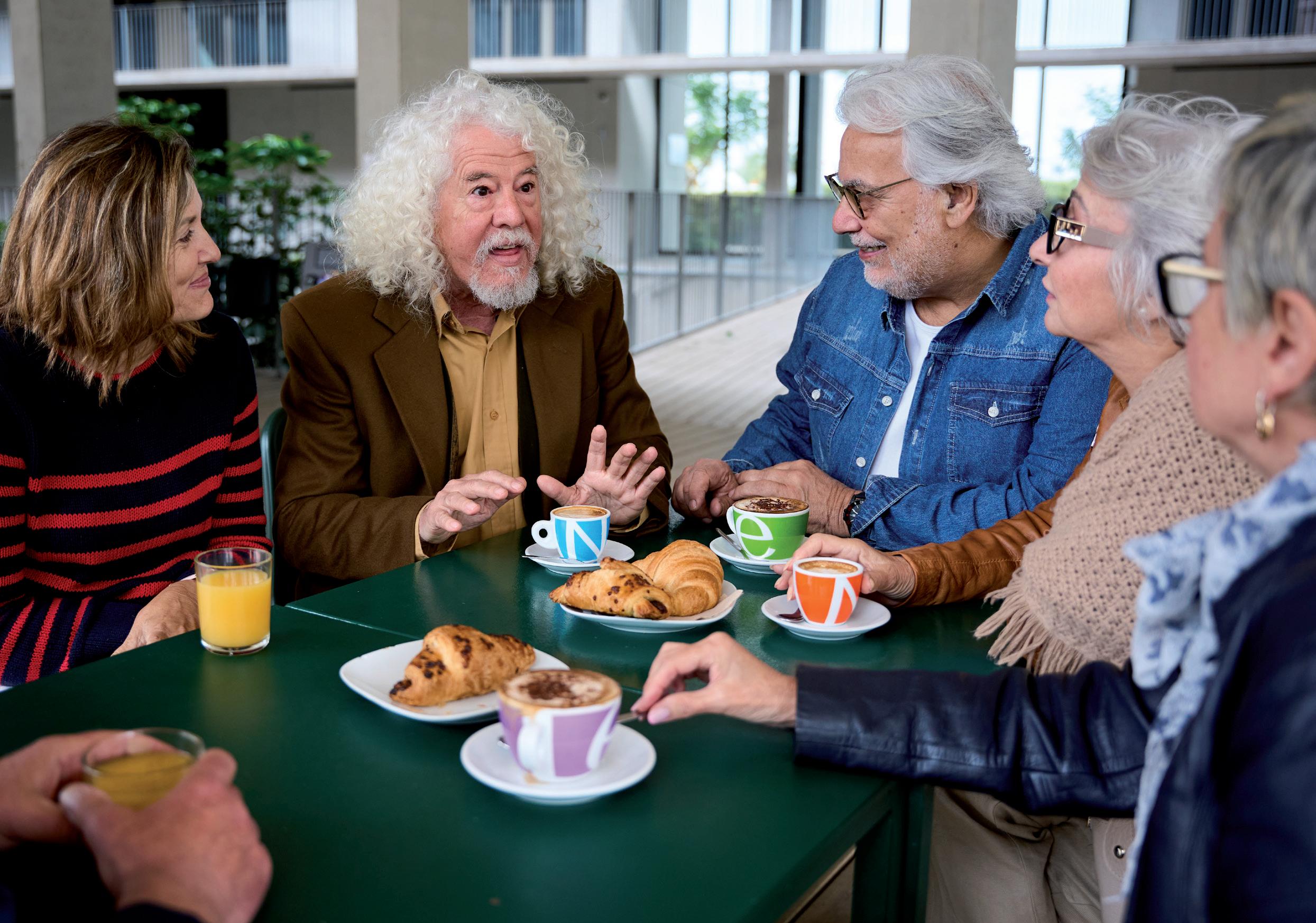
18 Milestone for Medication
10 High Risk Environments
Seniors living in residential aged care homes are at high risk of contracting healthcare-associated infections, which is the leading cause of morbidity and mortality in this setting, according to research from the A-PRECISE Project at Monash University.
12 Green for Good
Sustainability within aged care has been a major challenge for every provider, especially with an imminent industry-wide push for a greener future.
14 Sustainable Workforce Initiatives
Across the ditch, Australian aged care providers have sought new ways to introduce sustainability into village life.
20 Eye Spy
The recent National Palliative Care Week in Australia provided industry advocates with an opportunity to celebrate the achievements of the sector and focus on the next year of progress. 6 News
After decades of research, the development of the first treatments that can delay the onset of Alzheimer’s disease has been met with excitement and an outpouring of hope.
A new University of Otago – Ōtākou Whakaihu Waka study has found a link between eye health and dementia.
22 Focussed on the Future






From Caregiver to Connector
As a Resident Services Manager, Zeenat Farzana said no two days are the same, which is something she loves.
26 Staying Vigilant
Australians have been targeted by financial criminals in lucrative scams more than ever before, leaving many accounts hacked or compromised.
28 A Cautionary Tale
A report by Netskope has revealed that healthcare workers regularly attempt to upload sensitive data to unapproved locations on the internet.
30 Weak Passwords Cause Problems
New research has revealed how weak passwords put businesses at risk. For aged care providers, residents’ information is often unknowingly entered into unsafe platforms where privacy and security can be compromised.,
32 New Face for Aged Care
As a result of the recent Federal Election, Victorian MP Sam Rae has been appointed as the incoming Minister for Aged Care.
34 Vital Tool for Growth
The Cooperative Research Centre (CRC) will become an integral part of Australia’s growing care economy, in collaboration with the University of Sydney.
Harney & Sons Delights at Ōtau Ridge’s Mother’s Day High Tea
On the 8th of May, Harney & Sons New Zealand had the pleasure of sharing their craft with the residents of Metlifecare’s beautiful new Ōtau Ridge community in Clevedon, as part of their inaugural Mother’s Day High Tea.
Set against a backdrop of string melodies and a tempting array of sweet treats, the morning was an early taste of the luxury lifestyle on offer to future residents. Harney & Sons brought along a curated selection of six teas, a little world tour in cups, for everyone to sip and sample as the morning unfolded. Read more online

Importance of Checking Blood Pressure

The Heart Foundation has launched a nationwide blood pressure awareness campaign to encourage New Zealanders to get their blood pressure checked.
High blood pressure, also known as hypertension, affects a million New Zealanders and is the single biggest risk factor for New Zealand’s biggest killer - heart disease.
One in three New Zealanders over 30 have high blood pressure. Of those, only a quarter have it under control. There are 350,000 Kiwis who have high blood pressure and don’t know it.
“High blood pressure damages your arteries and can lead to serious complications such as heart attack and stroke,” said Heart Foundation Medical Director, Dr Gerry Devlin.
“It’s often referred to as a silent killer because it is a condition that rarely has symptoms.” Read more online
Scotland Says No to ALzheimer’s Drug
Scotland has said no to access for donanemab on the NHS, one of the drugs US medical researchers believe will delay the impact of Alzheimer's.
People with earlystage Alzheimer’s disease in Scotland will not be able to access the drug donanemab on the NHS, after it was rejected for use by the Scottish Medicines Consortium (SMC). This decision
followed the SMC’s rejection of another similar Alzheimer’s drug, lecanemab, earlier this year. These decisions follow that of the National Institute for Health and Care Excellence, which last year provisionally ruled that both donanemab and lecanemab should not be made available on the NHS for people in England and Wales. Read more online



New Role for Chris Roberts
New Zealand Private Surgical Hospitals Association have announced Chris Roberts as the new incoming Chief Executive.
Chris Roberts has been appointed Chief Executive of the New Zealand Private Surgical Hospitals Association (NZPSHA) in what the organisation says is a pivotal time to forge closer private-public partnerships across the health sector.
Announcing the appointment today, NZPSHA President Blair Roxborough said that as the New Zealand health system continues to face unprecedented demand for services and, as the population ages, strong leadership and new thinking was required.
“With a management background in government, utilities, research and membership advocacy, Chris is a respected professional who will bring a fresh perspective in his advocacy of the surgical services offered by NZPSHA’s 34 hospital members,” Roxborough said. Read more online
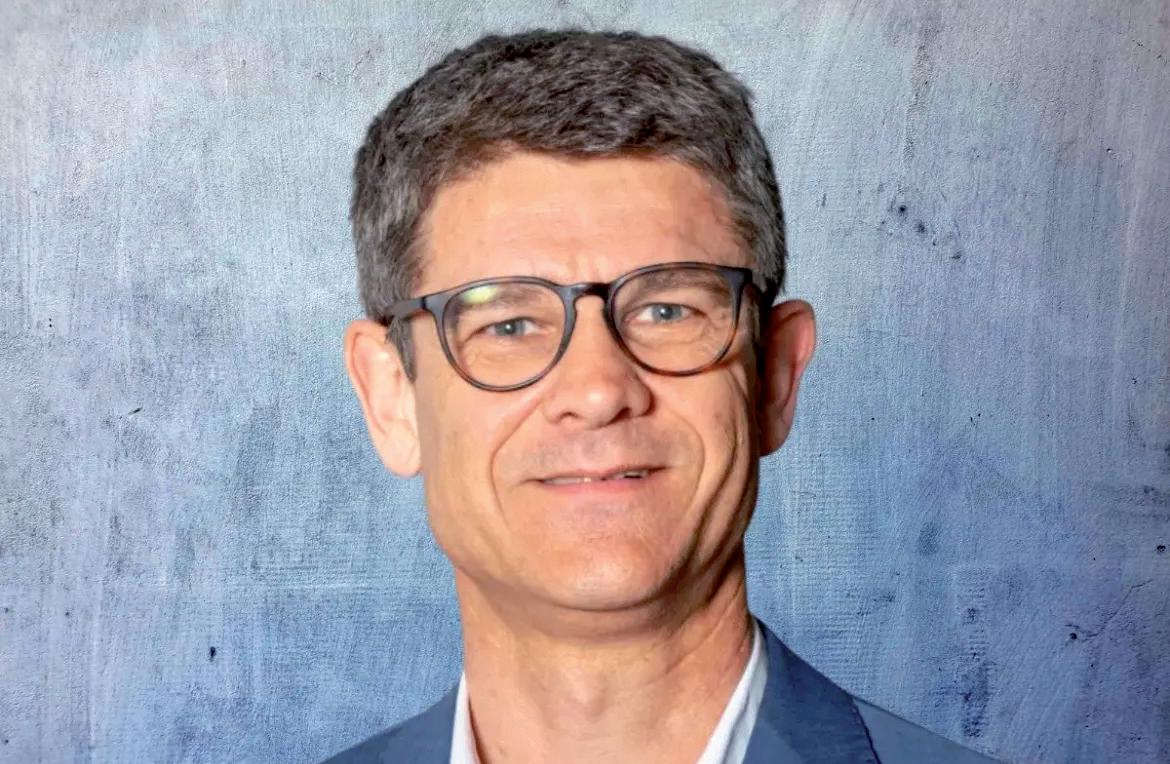
Ramping Crisis Causes Problems
A ramping crisis across Australia has caused issues for ambulances, as hospitals remain logjammed with long waiting times for patients.
Areport card from the Australian Medical Association (AMA) paints a stark picture of the escalating ambulance ramping crisis across Australia, revealing that in many states, ramping has doubled in the past five years.
The AMA’s Ambulance Ramping Report Card 2025 highlights the devastating impact of logjammed hospitals, leaving patients waiting too long to be admitted, sometimes with tragic consequences.
AMA president, Dr Danielle McMullen, described the levels of ramping as alarming, with reports of people tragically dying while waiting for an ambulance or dying in ambulances waiting for admission to hospital. Read more online

Challenge of Giving Up Driving
The Hon. Jillian Skinner AM reflects on her personal challenge of giving up driving at night, as new research highlights mental health impacts of driving cessation.
Former NSW Minister for Health and distinguished public figure, the Hon. Jillian Skinner AM, has opened up about the frightening moment she knew it was time to stop driving at night, shedding light on the emotional and practical challenges faced by those living with macular disease.
“I was driving my young granddaughter home from swimming lessons one winter evening, around 6:30 pm,” reflected Skinner, who has been living with agerelated macular degeneration (AMD) for 13 years.
“It was dark, and I realised that if someone had run across the road in front of me, I wouldn’t have seen them until it was too late. That was the moment I lost my confidence in driving at night, I stopped because I didn’t want to put myself or others at risk.”
Read more online
Reduced Level 2 and 3 Fees for 2025

For 2025, we’ve reduced fees on Level 2 and 3 Health and Wellbeing and Cleaning programmes by over 50%*
Learners completing Careerforce training programmes gain the skills needed to achieve nationally recognised health and wellbeing qualifications.
Our work-based programmes cover entry level certificates through to leadership and management diplomas. Talk to us about how we can help upskill your team.
*Applies to Careerforce’s employer-led programmes only careerforce.org.nz/aged-care 0800 277 486
HIGH RISK Environments
Seniors living in residential aged care homes are at high risk of contracting healthcare-associated infections, which is the leading cause of morbidity and mortality in this setting, from the A-PRECISE Project at Monash University.


Helen Rawson Professor Monash University
rofessor Helen Rawson, who is the co-lead for the Project, a multidisciplinary and consumer team, has examined the facilitators and barriers to effective infection prevention and control practices in residential agedcare homes (RACHs), working closely with two Victorian aged care providers, The Village Baxter in Frankston and Olivet Care in Ringwood.
A second-generation registered nurse and Deputy Head of School, Nursing and Midwifery at Monash University, Professor Rawson said she was passionate about collaborating closely with RACHs staff, residents, and their families to co-design strategies to support better health.
She added that the research team is
healthcare-associated setting, according to research

very proud to be giving residents a voice in helping guide these health solutions as well as collaborating broadly within the residential aged care setting.
“There’s no way you can do research that is about people living and working in the residential aged care space without working in collaboration with those people. Simply because you want to make sure that our research is relevant, it is feasible, it is applicable for context, and there’s no way we’re going to know that unless we work in collaboration and partnerships,” she said.
Professor Rawson added that successful collaborations are key if research outcomes are to have a positive impact on the people who its focused on.
“People working in those areas know what things they want answered, know what they
need to be able to support them to continue to do their work well. So, we, as researchers, must work in collaboration to ensure that we are answering relevant research questions that is supporting the residential aged care providers and relevant for them.”
Professor Rawson was most excited about the fact that the Project has worked in collaboration with residents.
“We have got them to have a voice. We have them in our project where their voice is heard. That part of the solution, it is not being done to them. They’re working with us.”
The three main takeaways from the project have been that seniors living in aged care are not just “things being cared for”, gaining valuable research from both residents and staff, and creating a true co-design involving all parties working together.
The A-PRECISE project, also co-led by Monash University’s Professor Phil Russo, has been undertaking research since 2022 and will end in the latter part of 2025. The team has aimed to develop, implement, and evaluate a tailored and innovative strategy to identify needs and priorities for intervention to reduce HAIs in RACHs. This will include education and other resources for consumers and staff, and the first electronic tool for point prevalence surveillance of healthcare-associated infections in RACHs in Australia.
The Australian Commission on Safety and Quality in Health Care has released new resources to assist in prevention of HAIs.
“Effective infection prevention and control (IPC) is central to providing high-quality aged care for all older people and a safe working environment for those who work in aged care settings,” the Commission outlined.
“In aged care settings, the focus of minimising infection-related risks in aged care requires careful consideration of the quality of life of the older people to whom services are provided as part of the approach for risk assessment. Putting older people at the centre of IPC and enabling them to take part in their own care involves considering their needs in relation to mental health and social wellbeing at all levels of decision-making.”

GREEN for Good
Sustainability within aged care has been a major challenge for every provider, especially with an imminent industry-wide push for a greener future.
ged care facilities have significant environmental complexities to achieve. These have included reducing energy consumption, minimising waste, and promoting sustainability practices. Aged care villages also have to manage a number of environmental risks while minimising costs.
Such risks include energy consumption and the carbon footprint from each village, waste management and the proper disposal of medical water, the potential to introduce water conservation measures, the use of environmentally friendly cleaning products and materials.
There are also risks associated to adopting renewable energy sources and responsible management of hazardous materials and chemicals.
Some villages have introduced their own

measures in order to strive towards a more sustainable future, starting with resident participation.
Metlifecare’s Waitākere Gardens in West Auckland has introduced a programme to eliminate disposable coffee cups from its village café from the start of April.
The reasoning behind this move has been due to global statistics. More than 500 billion takeaway coffee cups are manufactured every year, relying heavily on landfills as their final destination. In some cases, compostable cups also prove a difficult task, with only a small percentage ending up in commercial composting facilities.
Waitākere Gardens Village Manager, Donna Wallace, said communication was key to getting residents onboard with the initiative.
“We ensured a smooth transition by
discussing the initiative in village meetings, featuring it in newsletters, and placing reminders throughout the café. As a result, the response from residents was fantastic, and we’re really proud,” said Wallace.
To encourage residents to embrace the change, in the months leading up to the date, customers who brought in their own cups received a discount on their coffees.
In order to introduce new sustainable practices, Ryman villages have identified three key priorities in its sustainability strategy and highlighted its ambitious commitments.
Ryman has measured its greenhouse gas emissions for several years, and has continued to refine its approach and reported its progress publicly. In 2023, Ryman joined an elite group of global companies and be one of only three healthcare providers in Oceania to register with the Science Based Targets Initiative (SBTi), where it established a verified nearterm science-based target. By the end of the first year, Ryman’s goal was to deliver a detailed emissions reduction plan, which included milestones to achieve its sciencebased emissions target.
Ryman stated that it understood the criticality of its continuum of care model to its success, and its value to current and future residents. In a statement, the provider said that quality care sits firmly as a material issue.
“Our goal is to be the exemplars of quality in the aged-care industry; delivering care that is tailored to our residents’ health needs, preferences and rights, and innovating for the future. With the impending tsunami of age-related dementia threatening to overwhelm health systems, sustainable dementia communities will become an increasingly important offering within our model.”
In the coming years, Ryman has outlined a plan to invest in research and pilot leading dementia design, moving beyond dementia care centres to create dementia-friendly communities. This will be delivered in a future-focused model designed to cater to all residents needs whilst in a sustainable manner.

SUSTAINABLE Workforce Initiatives
Across the ditch, Australian aged care providers have sought new ways to introduce sustainability into village life.
or Catholic Health Australia, its position on driving environmental sustainability in the health and aged care sectors has become a key priority.
As Australia’s largest nongovernment grouping of health and aged care services, Catholic Health Australia accounts for approximately 15 percent of hospital-based healthcare, 12 percent of
aged care, and 20 percent of home care.
It highlighted its position on environmentally sustainable opportunities and how to adapt to a cohesive health and aged care sector.
Catholic Health Australia has called on the Government to collaborate on opportunities in climate health through greater coordination and cooperation between government and not-for-profit healthcare

and aged care providers in providing capability uplift with climate and health risk assessments and adaptation planning.
It also called for funding for the development of a not-for-profit health and aged care sectoral decarbonisation roadmap, and the strengthening of the not-for-profit aged care sector in climate resilience with scenario planning and funding mitigation strategies for improving emergency preparedness.
As stated by Catholic Health Australia’s research, Australia’s healthcare sector has been one of the largest contributors to greenhouse gas emissions annually and comprises seven percent of Australia’s total emissions, which was twice as much as the aviation sector. Hospitals account for roughly half of the sector’s emissions, including the levels of energy consumption for heating, cooling, and powering medical equipment as well as the emissions from waste management and use of anaesthetic gases.
Catholic Health Australia said that notfor-profit hospitals and the aged care sector have played a crucial role in the Australian healthcare system, and provided significant capacity and resources to complement and relieve pressure on the public sector.
Despite this crucial role, the not-forprofit and aged care sector has faced significant challenges, which have impacted sustainability and an increasing inability to deliver on expected decarbonisation efforts without financial incentives.
Current funding models for not-for-profit providers are restrictive in supporting decarbonisation efforts and have required specific support to be able to prioritise contributions towards the broader health and aged care sectors’ sustainability goals.
“Governments have a unique opportunity to support the not-for-profit health and aged care sector to rethink their approach to design and implement more environmentally sustainable care delivery,” Catholic Health Australia said.
There are some barriers that need to be addressed within the sector in order to usher in a more cohesive and sustainable health and aged care system. For example, there are distinct funding models, structures and strategic priorities between health, aged care, community care and those who operate across all of these areas. There are also current limited financial resources that restrict the ability of the not-for-profit sector to undertake large-scale projects, such as joint procurement to optimise the medical supply chain and minimise medical waste.
There remains a risk that sustainability compliance measures become increasingly enforced, without supporting mechanisms for implementation.
Catholic Health Australia added that a workforce capability uplift was also integral to any sustainability plan. However, ongoing workforce shortages in Australia have contributed to burnout and limited staff capacity to lead environmental sustainability initiatives.
Health and aged care professionals, particularly in regional locations, will need targeted support mechanisms in order to implement sustainable initiatives within their workforce.





MILESTONE for Medication
After decades of research, the development of the first treatments that can delay the onset of Alzheimer’s disease has been met with excitement and an outpouring of hope.
he immunotherapy drugs lecanemab and donanemab, which have both been approved for use in the USA (although not in New Zealand or Australia), can slow the progression of symptoms of Alzheimer’s disease for people in the early stages of the condition.
They also come with possible side effects that need to be carefully monitored by health professionals.
These and other immunotherapy drugs are just one avenue of potential treatment options for dementia that research teams in Australia and around the world are investigating.
Dr Janet van Eersel, who leads one such team at Macquarie University’s Dementia Research Centre, said dementia was such
a complex and varied condition that it was unlikely to find a “silver bullet” treatment that would be effective for everyone.
“What we likely need is a range of treatment options like we have for cancer and other conditions,” Dr van Eersel said.
“One promising potential treatment we are working on is gene therapy,” she said.
“We are aiming to deliver genetic material into brain cells using specially modified safe viruses to cross the blood-brain barrier. This genetic material can hopefully make the brain cell more resilient to the development of dementia.”
Dr van Eersel, who received research funding from the Dementia Australia Research Foundation, said in addition to her project, there were hundreds of gene
therapy clinical trials being run globally.
“It’s a very exciting field that has exploded in the past few years, and I think this is a very promising avenue for treating hard-totackle diseases such as dementia.”
As well as gene therapy, Dr van Eersel’s team is working to develop drug treatments for dementia.
“There are many questions to answer when you’re looking at drug treatments,” Dr van Eersel said.
“Firstly, what do you want to target? And what combination and doses are most effective? Testing must start with cell models, then in mouse models, before you get anywhere near any human testing. It’s a slow process.”
She added that the advancement in artificial intelligence computer modelling in recent years has sped this up.
“What this enables us to do is to narrow down the most promising drugs for further

testing. Like any modelling, it can be very useful, but it always needs to be validated in the real world.”
Earlier research into lecanemab and donanemab sparked a debate among researchers and organisations globally. In 2023, Alzheimers NZ Chief Executive Catherine Hall said there was still some way to go before any new drugs would become a viable treatment option, despite the encouraging findings.
Hall said the impact of any new medication would need to be weighed against possible side effects, and there was also a process to be followed in New Zealand before any new drugs are approved for use.
“We’re cautiously optimistic the research is heading in the right direction for the future, but we’re still quite some time away from this being a viable treatment option,” she said regarding the original findings.
AUSTRALIA'S NO. 1 PPE STATIONS
now locally available from our NZ Warehouse

Sterri-Matt® PPE Stations & Dispensers are the ultimate IPC solution with over a 100 versatile combinations to enhance your infection control programs

we also offer a wide range of Quad Glove Dispensers for added
& accessibility are also now available!





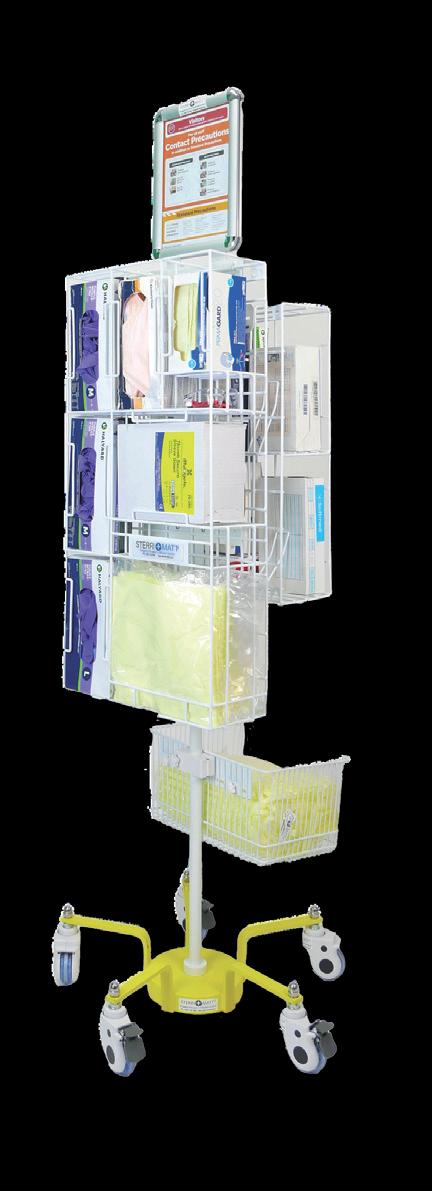


EYE Spy
A new University of Otago – Ōtākou Whakaihu Waka study has found a link between eye health and dementia.

unedin Multidisciplinary Health and Development Study researchers discovered that the blood vessels at the back of the eye, called retinal microvasculature, can show early signs that someone is at risk of developing dementia.
Co-lead author Dr Ashleigh BarrettYoung, of the Department of Psychology, said the findings link to previous work by members of the research team putting together pieces of a puzzle when it comes to recognising early signs of dementia.
The findings are too premature to be applied in the real world yet, but research is continuing around the world.
“Treatments for Alzheimer’s and some
other forms of dementia may be most effective if they’re started early in the disease course,” said Barrett-Young.
Knowing who would benefit from early treatment is crucial, but difficult to do with current testing methods, which she hopes will improve in the future.
Cognitive tests aren’t sensitive enough in the early stages and a person may not be experiencing any decline yet, while other tests, like MRI and PET scanning, are expensive and not widely available.
“In our study, we looked at the retina which is directly connected to the brain,” she said.
“It’s thought that many of the disease processes in Alzheimer’s are reflected in the retina, making it a good target as a biomarker to identify people at risk of

developing dementia.”
The study was co-led by Dr Aaron Reuben, of the University of Virginia, which showcased one of Otago’s many collaborations with universities around the world.
Researchers used data from eye scans from the Dunedin Study’s age 45 assessment.
It is New Zealand’s longest-running longitudinal study and is considered the world’s most detailed study of human health and development.
The scans revealed that narrower arterioles (the small blood vessels that carry blood away from the heart), wider venules (the smallest veins that receive blood from capillaries), and thinner retinal nerve fibre
layers (which carry visual signals from the retina to the brain) were associated with greater dementia risk.
Dr Barrett-Young said this was somewhat unexpected.
“I was surprised that venules were associated with so many different domains of Alzheimer’s disease, which suggested that it might be a particularly useful target for assessing dementia risk.”
Despite the findings, she has reminded people not to panic.
“This research is still in an early stage, and we can’t predict your future looking at an eye scan. Hopefully, one day we’ll be able to use AI methods on eye scans to give you an indication of your brain health, but we’re not there yet.”
FOCUSSED on the Future

The recent National Palliative Care Week in Australia provided industry advocates with an opportunity to celebrate the achievements of the sector and focus on the next year of progress.
alliative Care Australia highlighted the important work of the paediatric palliative care community, which has made significant strides within the industry over the past five years. In 2023, following three years of extensive research and consultation, Australia’s first ‘Paediatric Palliative Care National Action Plan’ was launched.
Two years on from the launch by Assistant Minister for Health and Aged Care, Ged Kearney, the plan is having an impact and improving the delivery of palliative care.
“The establishment of a Paediatric
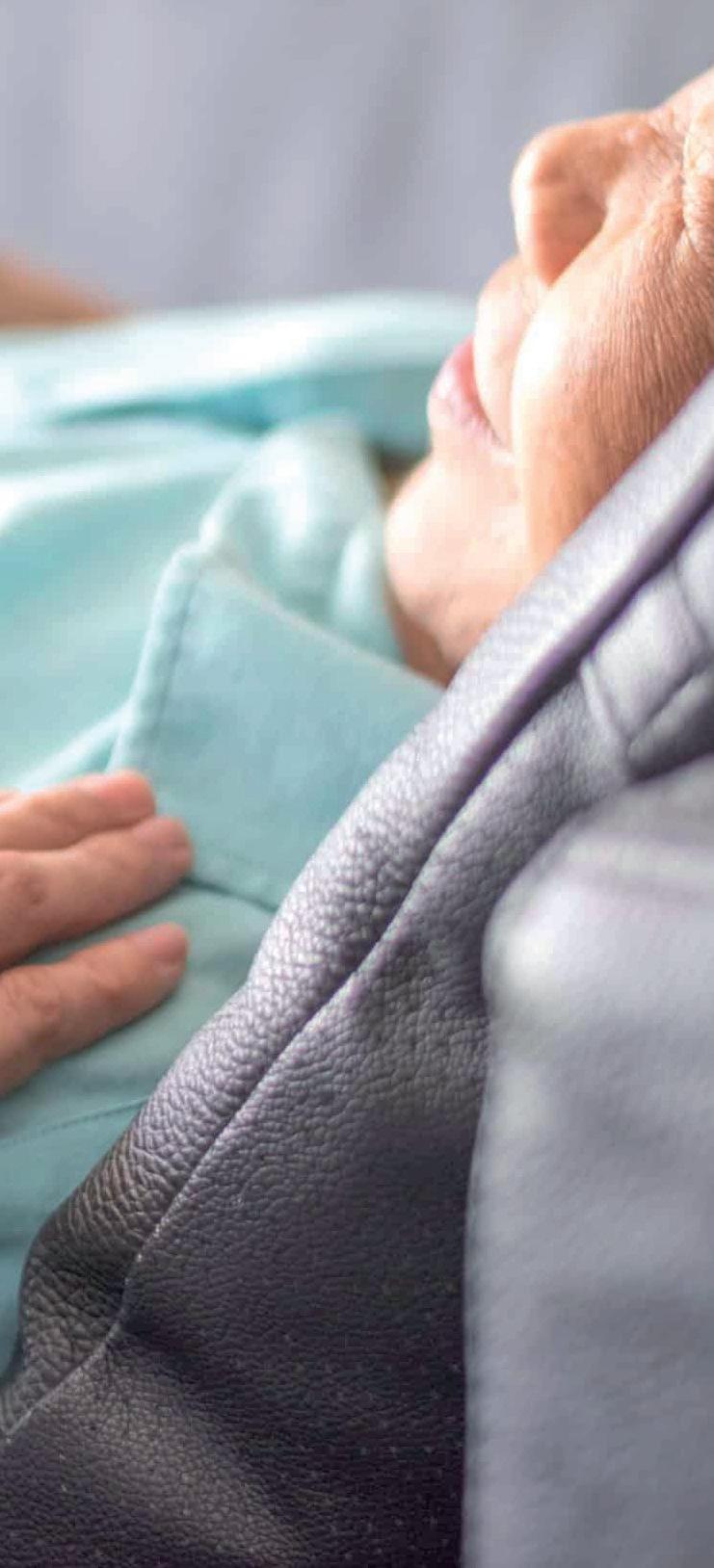
Palliative Care Centre of Research Excellence is a standout achievement,” said Camilla Rowland, CEO, Palliative Care Australia (PCA).
One of the strengths of the National Action Plan, was the involvement of people with lived experience in shaping the 18 actions that form the backbone of the plan. Other achievements in the last 12 to 18 months include end-of-life communication e-learning for health professionals, rural and remote outreach led by QuOCCA, and revolutionary paediatric palliative care clinical guidelines.
“What I love about this work is that the sector has not let any dust gather on the Action Plan,” said Rowland.
“There was a clear need when PCA and Paediatric Palliative Care Australia and New Zealand were funded by the Federal Government to do this work back in 2019, and the momentum generated along the way has flowed through to implementation.”
With the newly elected Federal Government officially sworn in, Palliative Care Australia has urged ministers to make palliative care an integral part of their agenda.
All sides of politics spoke about the need for stronger health and aged care services during the election campaign and put forward a range of initiatives.
“Measures that improve key systems like Medicare are good for palliative care,” Rowland said.
“But more is needed. We urge the reelected Albanese Government to adopt specific, targeted measures during this term, that start to address the growing demand for palliative care.”
In the lead up to the election, PCA and its members highlighted immediate actions the Australian Government can take to improve access to palliative care.
PCA had asked for better access to palliative care in primary care, better access to critical palliative care medicines, better access to palliative care in aged care, and better access to support at home for people under 65 with a terminal illness.
Rowland said that both main parties had been presented with these priority actions that deepen and mature the health and aged care reforms of the past three years. The actions were well recieved, and the organisation has been assured they will be considered.
At the rate of which the Australian population is ageing, Rowland said the time to act is now and there was a strong demand to respond to the need for more palliative care at a government level.
“Over the next two decades, the number of people aged over 85 will be more than one million. We have no time to waste when it comes to meeting their care needs. PCA looks forward to being a partner in that work with the new Albanese Government.”

FROM CAREGIVER to Connector
As a Resident Services Manager, Zeenat Farzana said no two days are the same, which is something she loves.
ith broad responsibilities, including overseeing the overall appearance and presentation of the facility, leading and supporting the team, and enhancing the resident leisure experience, Farzana said she enjoys the challenge of constantly shifting based on what the day brings.
She has viewed herself as the connector between all the moving parts, be it clinical, in the kitchen, and non-clinical teams, bringing everything together to deliver a seamless and high-quality service experience for residents.
Originally from the Islands of Fiji, Farzana began her career as a registered nurse. After moving to New Zealand in 2016,
she began her journey in aged care as a caregiver, and from day one, felt a deep connection to the industry. She said it was her calling.
She is now the Resident Services Manager at Oceania’s Elmwood Care Suites.
Driven by that passion, Farzana enrolled in a Business Management course and took on a front desk role at a luxury, boutiquestyle retirement village in Remuera while studying. After a year, she was promoted to Village Administration Manager at the same site.
“I’m someone who’s both passionate and ambitious, so I continued to grow, next stepping into the role of Assistant Village Manager with one of New Zealand’s leading aged care operators, where I stayed for


two years. When the opportunity to join Oceania as a Resident Services Manager came up, it immediately took my interest,” said Farzana.
“My background has always been rooted in care. Having experienced a range of roles across the sector has given me a well-rounded perspective and a deep appreciation for the work we do. I’m proud to have worked in aged care for over nine years now.”
The core highlight of her role has been enhancing the quality of life for our elderly residents. She has valued building meaningful and respectful relationships with both residents and their families. Farzana has also enjoyed event planning and leading the Leisure team to bring the outside world into the care home environment. She said the joy on residents’ faces has made it all incredibly rewarding.
A typical day for Farnzana begins with rounds across all three floors, where she will check in with the Front of House team, make sure breakfast is running on time, and ensuring the communal areas are looking their best.
Then it is time for a quick coffee while she catches up on her emails. From there, every day is different. It could involve walk-in enquiries and show-arounds,
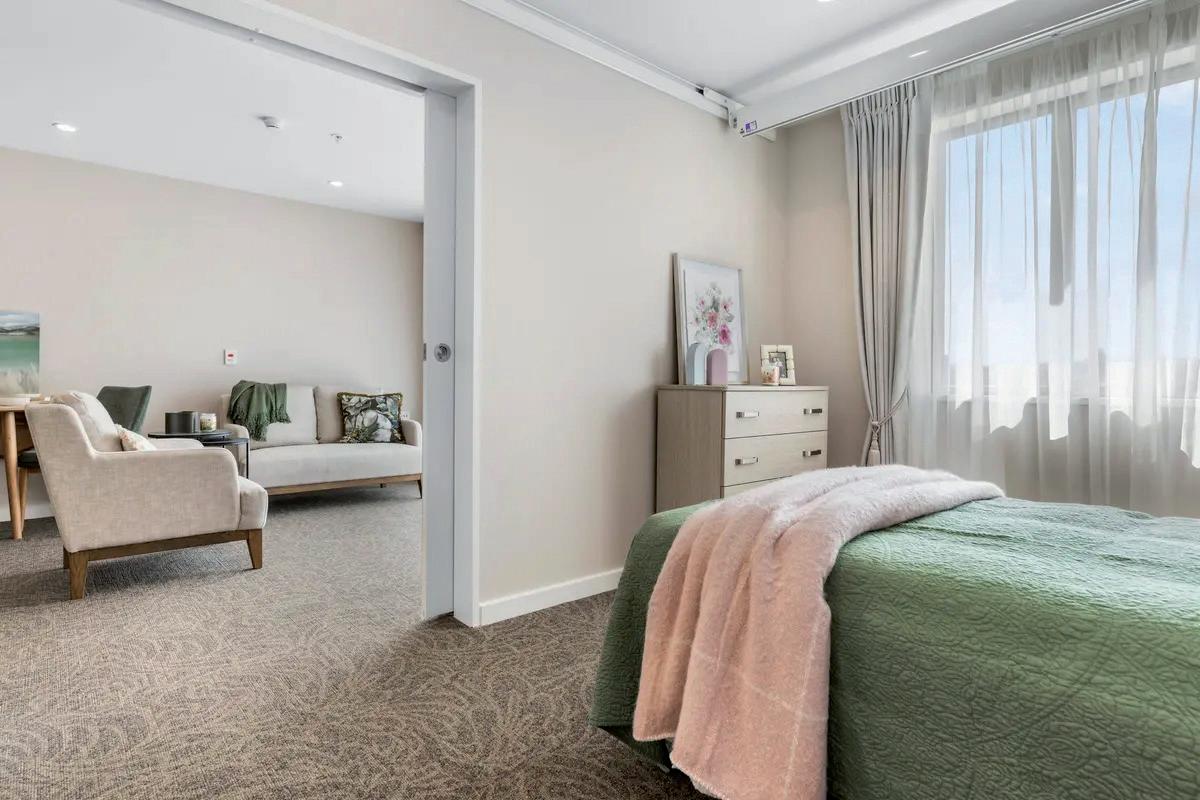

RESIDENT SERVICES MANAGER
addressing resident concerns, or liaising with housekeeping and maintenance to make sure the showrooms are always presentation-ready.
Between 12 and 1pm, she likes to be back on the floor during mealtime to oversee the dining experience and help where needed. Throughout the day, there are often staff matters that come up and need attention.
She said it is a very reactionary role, but that’s what makes it so engaging.
The biggest standout throughout her career has been training as a nurse, something Florence Nightingale once described as a “calling.” Migrating to a new country and finding a way to refocus those skills into a leadership role has been incredibly meaningful to her.
“Knowing that my work directly impacts someone’s overall well-being is what I enjoy most - it fills me with a deep sense of gratitude and purpose. I also value the lifelong learning and resilience this work continues to teach me.”
In the future, Farzana hoped she would one day progress to the role of a Business and Care Manager or Village Manager. She believed that aged care was evolving for the better, and has envisioned herself in this industry for many years to come.
Zeenat Farzana
STAYING Vigilant
Older adults have been targeted by financial criminals in lucrative scams more than ever before, leaving many accounts hacked or compromised.

he National Anti-Scam Centre in Australia has seen a significant rise in financial criminals targeting older adults with phishing scams that scare people into believing that their bank accounts or cryptocurrency wallets have been hacked or compromised.
As a precaution, seniors have been advised to stay vigilant when using online banking or payment platforms, and not to be afraid to ask for help.
Retirement villages across Australia have reiterated this message, and also highlighted the many services available to seniors to assist them with these matters.
Seniors are, unfortunately, prime targets
for cybercriminals. Especially for those who manage their own finances, there is a severe need to instil online training and awareness of fraudulent activities online. This also includes text, social media and telephone scams too.
These scams use a sense of urgency and fear to make people act quickly and use phrases such as ‘account compromised’, ‘unauthorised’ or ‘suspicious transactions’, or ‘you’ve been hacked’ to deceive individuals into granting access to their accounts to steal money or cryptocurrency.
From 1 January to 23 March 2025, the National Anti-Scam Centre’s Scamwatch service received over 16,700 reports of

phishing scams, resulting in losses of AUD 11.1 million. This is an increase of over 200 percent in financial loss compared to the same period in 2024.
Notably, over 75 percent of these losses relate to cryptocurrency phishing scams with criminals targeting the six million Australians who own cryptocurrency.
Major cryptocurrency platforms Swyftx and CoinSpot, who have a combined Australian customer base of 2.8 million, are helping combat scammers by newly partnering with the National Anti-Scam Centre to share data on scams.
“This type of scam often works by creating a sense of urgency. Criminals can achieve
this very effectively, given many Australians are already on high alert that they have been caught up in a data breach or are concerned about scams and cyber threats,” ACCC Deputy Chair Catriona Lowe said.
“Tragically it’s this very sense of urgency that enables the scam. We found an increase in money lost when these scams involve claims that cryptocurrency accounts or wallets have been compromised.”
Lowe added that scammers often impersonate cryptocurrency platforms and warn people about suspicious activity on their accounts. They then pressure people to transfer their holdings to fraudulent cryptocurrency wallets.
“We are pleased that Swyftx and CoinSpot have recently signed up to data sharing arrangements on scams with the National Anti-Scam Centre,” she said.
“We encourage businesses to talk to us about how they can help protect Australians by entering a data-sharing arrangement with us. The intelligence shared can provide early warning of new scam types as well as data crucial to disruption.”
Phishing scams are typically received via phone call, text message or email. The most common way people were contacted was when they were sent a text message alerting them to ‘suspicious activity’ or ‘account compromise’ which prompted them to log in via a malicious link or to call a number.
Some messages copy the SMS SenderID of a trusted organisation to add legitimacy to the scam, meaning the scam message would appear with other legitimate messages in the thread.
“We urge consumers to stop and check when they receive messages claiming to be from trusted authorities, especially if they relate to a crypto, superannuation or a bank account,” Lowe said.
“It is important consumers never click on links in text or email message that asks for login or password details and only log into accounts directly through the official website or app.”

A CAUTIONARY Tale
A report by Netskope has revealed that healthcare workers regularly attempt to upload sensitive data to unapproved locations on the internet.

etskope Threat Labs has published its latest threat report dedicated to healthcare, revealing that workers in the industry regularly attempt to upload sensitive data to unapproved locations on the web or in the cloud.
Generative AI applications such as ChatGPT or Google Gemini, the two most commonly used by healthcare workers, are often involved in data policy violations as their use in the workplace goes mainstream.
Key findings revealed that 81 percent of all data policy violations occurring in healthcare organisations in the last twelve months were for regulated healthcare data, which is data
protected by local, national or international regulations, and includes sensitive medical and clinical information. Passwords and keys, source code, or intellectual property were also impacted (19 percent altogether), and a large number of those violations were from individuals uploading sensitive data to personal Microsoft OneDrive or Google Drive accounts.
GenAI has become ubiquitous in the sector, and genAI applications are now used in 88 percent of healthcare organisations. A large proportion of data policy violations are now occurring in the context of genAI usage by healthcare workers, with 44 percent involving regulated data, 29 percent source code, 25 percent intellectual property,

and two percent passwords and keys. Additional risks of data leaks can come from applications that leverage user data for training, or that incorporate genAI features, which are used in 96 percent and 98 percent of healthcare organisations, respectively.
More than two in three genAI users in healthcare use and send sensitive data to their personal genAI accounts at work. This behaviour is hindering security teams’ visibility over genAI-related activity among their staff, and without proper data protection guardrails, their ability to detect and prevent data leaks.
“GenAI applications offer innovative solutions, but also introduce new vectors for potential data breaches, especially in
high-pressure, high-stakes environments like healthcare, where workers and practitioners often need to operate with speed and agility,” said Gianpietro Cutolo, Cloud Threat Researcher at Netskope Threat Labs.
“Healthcare organisations must balance the benefits of genAI with the deployment of security and data protection guardrails to mitigate those risks.”
In doing so, they can consider deploying organisation-approved genAI applications among the workforce to centralise genAI usage in applications approved, monitored, and secured by the organisation, and reduce the use of personal accounts and “shadow AI”. The use of personal genAI accounts by healthcare workers, while still high, has already declined from 87 percent to 71 percent over the past year, as organisations increasingly shift towards organisationapproved genAI solutions.
Deploying strict Data Loss Prevention (DLP) policies to monitor and control access to genAI applications and define the type of data that can be shared with them provides an added layer of security should workers attempt risky actions. The proportion of healthcare organisations deploying DLP policies for genAI has increased from 31 percent to 54 percent over the past year.
Organisations can also consider deploying real-time user coaching, a tool alerting employees if they are taking risky actions. For example, if a healthcare worker attempts to upload a file into ChatGPT that includes patient names, a prompt will ask the user if they want to proceed. A separate report shows that a large majority of employees (73 percent) across all industries do not proceed when presented with coaching prompts.
“In the healthcare sector, the rapid adoption of genAI apps and growing use of cloud platforms have brought new urgency to protecting regulated health data,” said Cutolo.
“As genAI becomes more embedded in clinical and operational workflows, organisations are accelerating the rollout of controls like DLP and app blocking policies to reduce risk. Healthcare organisations are making progress, but continued focus on secure, enterprise-approved solutions will be critical to ensure data remains protected in this evolving landscape.”
WEAK PASSWORDS Cause Problems

New research has revealed how weak passwords put businesses at risk. For aged care providers, residents’ information is often unknowingly entered into unsafe platforms where privacy and security can be compromised.,
ord Security said that businesses can spend millions on advertising, branding, and cuttingedge innovations to stay ahead of the competition, yet when it comes to cybersecurity, many overlook one of the most basic security measures, strong passwords.
Research conducted by NordPass has revealed that corporate passwords are typically highly predictable, making businesses an easy target for cybercriminals.
Data from 11 different industries showcased that there was a concerning reality that employees still used weak, easyto-crack passwords that leave companies and sensitive data exposed. From healthcare to financial services, technology and education, there was a common theme

throughout every workforce surveyed that businesses still continue to rely on credentials that cyber criminals are able to easily hack in a matter of seconds.
“It’s shocking to see that, despite years of warnings, businesses continue to use weak passwords that are incredibly easy for hackers to exploit. Cybercriminals don’t need sophisticated tools to breach a company when employees are using password or their own names to protect sensitive data,” said Karolis Arbaciauskas, head of business product at NordPass.
NordPass research has also analysed the most commonly used corporate passwords across 44 countries, revealing that weak password habits are not limited to any one region. In every country studied, predictable credentials such as simple number sequences, common words, and even company-related terms leave
businesses vulnerable to cyber threats. Experts also observed a concerning trend that identified default passwords like newmember, admin, newuser, and welcome as frequently used for business accounts. Additionally, temporary placeholders such as newpass and temppass, which are meant to be changed, often remain in use, creating an open door for cybercriminals.
Across all industries and regions, the most commonly breached corporate passwords show a clear pattern: employees continue to rely on easy-to-guess credentials.
Some of the most popular not-sosecret business passwords in this corner of the world include password, 123456, 123456789, qwerty, Password1, qwerty123, and abc123.
The leading causes of password hacking often revolve around simple mistakes. Employees often recycle their passwords across multiple accounts, which makes it easier for hackers to gain access. Sharing passwords via email or messaging apps can also increase the likelihood of breaches.
As many breaches are the result of human errors and simple mistakes, highlighting the need for better cybersecurity training among employees is an essential step managers should consider to prent any future problems. Companies without robust security policies are prime targets for cybercriminals.
According to Arbaciauskas, businesses must prioritise cybersecurity by implementing cyber resilience plans, employee training, and network security solutions like business VPNs. Multi-factor authentication (MFA) adds a crucial layer of defence, reducing the risk of unauthorised access. Weak password management remains a major vulnerability, with many breaches caused by compromised credentials. Arbaciauskas recommended using password managers for secure storage and exploring passkeys, adopted by industry leaders like Google and Apple, as a safer alternative to traditional passwords.

for Aged Care NEW FACE
As a result of the recent Federal Election, Victorian MP Sam Rae has been appointed as the incoming Minister for Aged Care.

MP Sam Rae Minister for Aged Care
n a cabinet reshuffle, Prime Minister Anthony Albanese has reappointed Mark Butler as the Minister for Health and Ageing, whilst adding responsibility for the National Disability Insurance Scheme to his portfolios.
Victorian MP Sam Rae has replaced Anika Wells as Minister for Aged Care. Wells has moved to the new portfolio of Communications and Sport.
On the occasion of his new role, many organisations have congratulated Sam Rae ahead of the new parliamentary term.
Ageing Australia CEO Tom Symondson called on the new Albanese front bench to take a staged approach to the new Aged Care Act as a priority.
“We congratulate Mark Butler on his reappointment and look forward to continuing our relationship in the future. We also congratulate new Minister Sam Rae on his elevation to the Aged Care portfolio,” said Symondson.
“We also wish Anika Wells the best of luck with her new responsibilities. We worked closely with Anika and the opposition to garner rare bipartisan support for the new Aged Care Act in the previous term of parliament. We know she truly cares for older Australians and thank her for her support.”Ministers Butler and Rae are charged with overseeing a sector facing unprecedented change with the introduction of the new Aged Care act on July one.
“We’re running out of runway for the July 1 deadline, yet aged care providers still don’t have all the necessary information to prepare for these significant reforms,” said Symondson.
“We wholeheartedly support the new Act and the charter of rights for older people, but it’s becoming clearer by the day that we won’t be ready to implement every program due to the sheer scale of change.”
Council of the Ageing CEO Patricia Sparrow said she looked forward to working with the Ministers, and the Federal Government as a whole, in order to ensure the delivery of meaningful action on key issues impacting older people.
“We’re hopeful the re-elected Albanese Government will be one that governs for
people of all ages and one willing to work collaboratively with people of all generations to achieve the change we need to see,” said Sparrow.
“Addressing the key challenges facing older people today is not just about supporting the current generation of older people but ensuring that future generations don’t face the same issues. It’s about building a fairer, stronger future for every generation.”
Sparrow added that the new Federal Government’s cabinet ministry was filled with MPS who COTA know are passionate about improving the lives of older Australians, and indeed Australians of all ages.
“Older Australians are hopeful this next term will deliver a government that governs for all ages, recognising both the shared and specific challenges facing older and younger Australians alike.”
OPAN CEO Craig Gear also congratulated Rae on his appointment. However, he said that with the shift of portfolio, it was disappointing to see it demoted from cabinet status.
“It is disappointing to see that aged care is no longer the responsibility of a Cabinet Minister, and we urge the Government not to deprioritise aged care reform at this crucial stage,” said Gear.
He also urged the Government to not delay the New Aged Care Act further.
“It is important we do not see a delay to the commencement of the new Aged Care Act. Older people have waited too long for their rights to be enshrined in legislation. OPAN will continue to work productively with the Federal Government to ensure the rights of older people are front and centre,” said Gear.
Symondson added that everyone in the industry wanted these reforms to succeed, which means a staged implementation approach will be vital.
“Failure is not an option. If we don’t get this right we risk widespread confusion for older Australians and a loss of confidence in the sector as a whole. We know everything won’t be ready, so we need to work with the Government and the opposition on a plan B.”

VITAL TOOL for Growth
The Cooperative Research Centre (CRC) will become an integral part of Australia’s growing care economy, in collaboration with the University of Sydney.
ustralia’s growing care economy is set to be transformed by the nation’s first Cooperative Research Centre (CRC) in the sector with collaborators from the University of Sydney and industry. Led by La Trobe University, it is funded by a AUD 35 million grant from the Australian Government.
The care economy is a critical industry, covering all services that support people’s wellbeing from early childhood education to aged care, family services, social housing, mental health and disability support.
The Care Economy CRC has been awarded AUD 35 million in funding from the Australian Government through its
CRC grant program. The AUD 129 million, 10-year partnership of 60 organisations across Australia will collaborate on care technology, data solutions and workforce innovation to address challenges such as increased demand and skills shortages currently crippling the sector.
Located at La Trobe University, the CRC will foster collaboration with wideranging stakeholders from across Australia including private and public companies, partner universities, councils of social service, regulators, government agencies, consumer peak bodies and community groups.
Professor Adam Dunn, from the Faculty of Medicine and Health, will lead the University’s node of the CRC, and is one of

three Research Program Leads in the CRC, focused on data solutions.
“I am excited about helping researchers across faculties work together with industry partners to create new care technologies, improve how we use data and AI across care sectors, and build a more resilient and effective care workforce,” Professor Dunn said.
University of Sydney Vice-Chancellor and President Professor Mark Scott AO, welcomed the initiative which is projected to deliver more than AUD 1.4 billion in direct benefits over the next 15 years.
“The University of Sydney is proud to be a partner on this Centre, working with industry in our shared commitment to serving Australia in this area of critical need – delivering improved outcomes to some of Australia’s most vulnerable and supporting jobs for the future,” Professor Scott said.
Care Economy CRC’s Interim Chief Executive Officer, Carmela Sergi, said the CRC will develop new technologies and workforce solutions to meet Australians’ expectations for high-quality and contemporary care into the future.
“This funding will help transform care services to improve quality, productivity and sustainability of care,” Carmela Sergi said. Director of La Trobe’s Care Economy
This funding will help transform care services to improve quality, productivity and sustainability of care.
Research Institute (CERI) and incoming Research Director of the Care Economy CRC, Professor Irene Blackberry, said that no other research centre in the world is focusing on health and social care at this scale of investment and that the new CRC will play a pivotal role in advancing Australia’s care system.
“By fostering collaboration and innovation, we can ensure that Australians receive the highest quality care, and that our care workforce is well-equipped to meet future challenges,” Professor Blackberry said.
The industry-led research centre will support the growth of small and medium enterprises in the care sector, boosting their growth and contributing to the overall prosperity of care providers and outcomes for people in care.
By supporting innovation and workforce efficiencies, the CRC will position Australia as a global leader in exportable care services, models, training, and technologies.
A key focus will be on a new education and training program, co-created with industry and care participants, integrating the three programs of research. The program will create new career pathways, qualifications and training that will improve overall workforce digital literacy levels.

